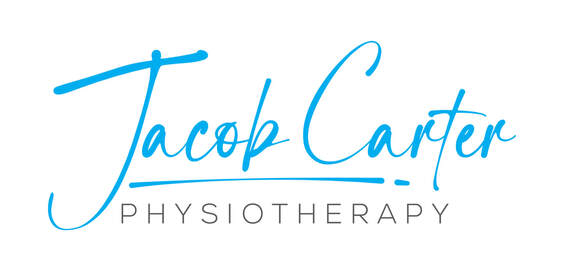Falling Short of a Full Recovery: Part 2There is a growing body of evidence that demonstrates the effectiveness of physiotherapy. The profession has seen growth that can be largely attributed to ongoing research, higher level of training, expansion of restricted activities (e.g. use of acupuncture needles, performing spinal manipulation, prescribing diagnostic imaging, endotracheal suctioning, etc.), inter-professional collaboration, and the many leaders that advocate for the profession and push it to higher levels. Despite this, in day-to-day practice, we hear from patients that their pain has not improved or that physiotherapy does not work. Why? Let's start by noting that poor adherence is not exclusive to Physiotherapy; It has been identified in many healthcare disciplines, including physiotherapy (Jack, McLean, Moffett & Gardiner, 2010, Martin et al., 2015). Ultimately adherence to treatment has implications on effectiveness, patient wellbeing, and the overall cost of treating the dysfunction in the long term (e.g. costs may bleed into primary healthcare and/or the treatment of other co-morbid conditions). Although there is no accurate data on the number of patients that fail physiotherapy in Canada, individual clinicians and clinics in which I have worked have seen non-adherence rates in the range of 5 to 25%. The validated research that does exist is outdated, is not exclusive to training in Canada, and does not subdivide adherence based on education/credentials, skill-sets employed in treatment, years of experience, etc. Studies indicate widely different non-adherence rates in physiotherapy; Two older studies found that between 14% (Vasey, 1990) and 70% (Sluijs, Kok, Van Der Zee., 1993) of physiotherapy patients did not adhere to the recommended treatment or number of follow-up appointments. The best quality research available on this topic was published in 2010. The authors completed a literature review of 20 studies (that varied in patient demographics, practitioner demographics, assessment of dysfunction, treatment of dysfunction, and every other variable you can think of...) and found that the majority of available research has focused on factors that were in the patient's control. They concluded that "There was strong evidence that poor treatment adherence was associated with low levels of physical activity at baseline or in previous weeks, low in-treatment adherence with exercise, low self-efficacy, depression, anxiety, helplessness, poor social support/activity, greater perceived number of barriers to exercise and increased pain levels during exercise" (Jack, McLean, Moffett & Gardiner, 2010). It is clear that more research is needed on barriers introduced by health professionals and health organizations. Barriers to Success
Clinician understands patient goals: Ask the patient about the circumstances surrounding their injury: Do they need to return to full health for a specific competition or a specific date? Is the patient training for a specific task? What is their required level of function in sport or daily function? Has the patient created a SMART goal? (SMART stands for Specific, Measurable, Attainable, Realistic and Timely). Patient readiness to change: The very motivated patients will likely stand out, but some patients are a bit harder to read. As a result we need to discern their level of motivation, as this directly correlates to their level of commitment in receiving treatment, and to their home exercise program. (E.g. Did they come to physiotherapy because they were told they should by their parents, spouse, coach?) Adequate timeline for rehabilitation: Does the patient have enough time to adequately treat their dysfunction (e.g. A sports competition in 2 weeks may impair the ability for full recovery). Correct pathoanatomical diagnosis of dysfunction: Clinicians should arrive at a precise and accurate diagnosis. Correct diagnosis of related impairments: If the patient has a complex history, the clinician may need to revisit previous injuries to determine stage of healing and any impairments that affect regional interdependence. Treating the dysfunction in the most effective manner: Comprehensive literature reviews indicate that the most effective combination treatment modalities includes exercise, manual therapy (soft tissue release, joint mobilization and manipulation), IMS/dry needling, and pain education. There is evolving evidence that supports shockwave therapy and laser therapy. The evidence found in Western Medical Research is weak (or moderate at best) for the use of ultrasound, TENS, IFC, NMES, and acupuncture. Implications of past medical history, lifestyle choices: Patients may not heal as well or as quickly if they have other co-morbid conditions or impairments, regularly use or abuse drugs/alcohol, do not sleep well, do not eat well, or live in a stressful environment. Alternatively, patients can expect faster resolution if they have a clean bill of health, active lifestyle, healthy diet, sleep well, are proactive, and experience a healthy level of stress in their life. Clinician provides proper education to patient: What is Physiotherapy? What can I expect during the assessment? Why am I having pain? What is 'pain'? Do I have any derangement (actual tissue damage)? What is my prognosis (can I expect a full recovery and how long will it take)? What can I expect during a given treatment? Do I need to do anything at home/in the gym to make a full recovery? How much time do I need to dedicate to this? Clinician motivates patient: Some patients need a little extra help to overcome their injury as they struggle with depression, anxiety, helplessness, poor social supports, or barriers as related to exercise or pain. Getting to know your patients, checking in, and making yourself easy to access (e.g. providing patients with you email address) can make a world of difference. Commitment of time and resources: Some patients can only afford the initial assessment, whereas others happily follow their clinician’s recommendations. It is difficult to discuss finances with a patient, but this information is crucial to developing a proper treatment plan. To indirectly address this variable, I recommend a certain number of treatments based on the assessment findings and the patient's goals. Ultimately this gives control back to the patient, as they are now equipped with the knowledge of their diagnosis and optimal treatment plan. The result is that the patient can make an informed decision on treatment frequency, affordability and their perceived value of the treatment. Lastly, if there are insurance programs that exist and may assist patients in paying for treatment, I will recommend that the patient research potential options. Patient understands clinician: Sometimes medical professionals speak using a lot of medical language (jargon) that is not understood by all patients. Clinicians must allow open communication and have ample time to answer their patients questions. If you are a clinician that runs out of time during an assessment for effective communication, your clients may appreciate if you open additional avenues of communication (E.g. email). Patient is satisfied with lack of pain, but understands they have not fully recovered: If a patient provides me with this explanation, it may be because I have not provided proper education or assessed their function. Alternatively, there may be other variables at play, which means that I need to allocate additional time to chat with the patient and determine underlying reasons. Otherwise, I am happy to accept their informed decision and encourage the patient to follow-up if they have any questions or concerns. Concluding RemarksIn theory, providing an evidence-based, individualized treatment should lead to the best clinical results. In practicality, there are many other variables that clinicians may need to address to treat the patient as a person and achieve real and lasting results. It can be challenging as a clinician to be aware of all of these variables, all of the time. As a result, the clinician and client must create a partnership where open communication absolves barriers and leads to amazing outcomes! ReferencesMartin, L. R., Williams, S. L., Haskard, K. B., & DiMatteo, M. R. (2005). The challenge of patient adherence. Ther Clin Risk Manag, 1(3), 189-199.
Jack, K., McLean, S. M., Moffett, J. K., & Gardiner, E. (2010). Barriers to treatment adherence in physiotherapy outpatient clinics: a systematic review. Manual therapy, 15(3), 220-228. Sluijs, E. M., Kok, G. J., & van der Zee, J. (1993). Correlates of exercise compliance in physical therapy. Physical therapy, 73(11), 771-782. Vasey, L. M. (1990). DNAs and DNCTs—Why do patients fail to begin or to complete a course of physiotherapy treatment?. Physiotherapy, 76(9), 575-578.
1 Comment
|
Have you found these article to be informative, helpful, or enjoyable to read? If so, please visit my Facebook page by clicking HERE, or click the Like button below to be alerted of all new articles!
Author
Jacob Carter lives and works in Canmore, Alberta. He combines research evidence with clinical expertise to educate other healthcare professionals, athletes, and the general public on a variety of health topics. Archives
November 2022
Categories
All
|
|
|



 RSS Feed
RSS Feed